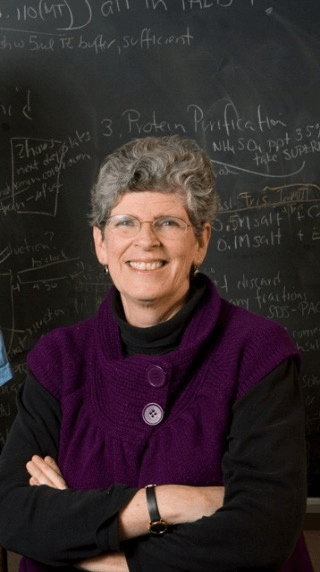
Professor O’Hara is the chair of the Amherst College Biochemistry-Biophysics department. She investigates aspects of the intersection of food and human biochemistry in her lab, as well as other topics of research. Outside of the lab, Professor O’Hara engages with questions relating to food in other, fascinating ways in her scholarship and teaching. I spoke with Professor O’Hara to learn about her work in molecular gastronomy, and about a recent celebration for BCBP majors which she organized.
Can you tell me a bit about the BCBP event that you were recently a part of? Did the idea behind the event take inspiration from your research in molecular gastronomy?
“The chocolate tasting was part of a Celebration of Majors moment. We mailed all 50 majors, and 13 faculty and staff, packages with a BCBP Major baseball hat and gathered in a Zoom meeting to say hello and welcome the new Juniors, Seniors returning from a semester abroad, and everyone else. We shared some news and then I gave a small presentation about taste and taste receptors, emphasizing that the cooperation and communication between types of receptors was how certain foods paired together so well. One example is the way salt picks up and amplifies the flavor of dark chocolate. Each student and faculty member had been sent two pieces of chocolate. We tasted the dark chocolate first (quite bitter), then tasted the second piece that had sea salt crystals on the top and POW! What a difference! I love the metaphor of different receptors working together to produce better outcomes. I have learned about all of this through teaching molecular gastronomy and taking a sabbatical semester at Harvard with their Food and Science program.”
What has motivated your interest in teaching and researching about food?
“STUDENTS – in 2014, I met five first-year students who were super interested in food and molecular gastronomy and begged me to supervise a special topics course.”
From reading your faculty webpage, it seems like you have a strong interest in elucidating how the chemical components of foods interact with human biology, and also in understanding the cultural, historical, political, and industrial aspects that affect our relationships with foods. In what ways do you try to either bring together or keep separate the biochemistry of food and these other implications when you do research and teach?
“What a perceptive question! I actually never try to separate knowledge into separate domains. I find the interrelationships to be where all the interesting stuff happens.”
Under your research interests you mention that your lab is exploring foods that can act as nutraceuticals, particularly the role of antioxidants. Can you give a little background on how nutraceuticals help to prevent diseases, and your lab’s methods for investigating this?
“Antioxidants are present in many foods – especially olive oil – and work to help your body fight oxidations that give rise to many diseases and are at the heart of molecular aging. We are trying to develop tools for measuring antioxidant levels in olive oil. Existing methods are frightfully expensive for farmers and consumers. We’d like to develop a test strip that could monitor these levels simply and inexpensively.”
It seems like olive oil has been an important part of your work in molecular gastronomy. Could you tell us a bit about your work with olive oil?
“Olive oil became a subject of my research by accident. It is a bit of a long story, but started with a friendship with a new visiting professor at the College who invited me to visit her when she returned to Turkey, home of extraordinary olive oil. The full story of my year travelling to almost 100 different groves, olive presses, factories, testing centers, and recycling plants in a dozen countries can be found in my book, co-authored with my husband and my Turkish friend Zeynep Delen Nircan. The Chemical Story of Olive Oil ,,can be found on Amazon and was just translated and published in Turkey in February.”
Are there any publications of yours that you would recommend to someone looking to learn more about your lab’s work in molecular gastronomy? Additionally, have there been any writings in this field that were particularly influential for you?
“Harold McGee’s timeless classic on food chemistry [,On Food and Cooking,: The Science and Lore of the Kitchen,,] is the bible of molecular gastronomy. I am in the process of writing my own book that is more chemistry focused but do have two shorter pieces that are more like appetizers. One will be published early next year in The Handbook of Molecular Gastronomy.”
Professor O’Hara’s work provides an interdisciplinary lens into important and interesting issues in food chemistry. These have applications to human health, taste and flavor, food production, and other areas of relevance to our everyday lives. I appreciate her time and insights into the convergences of food and science.